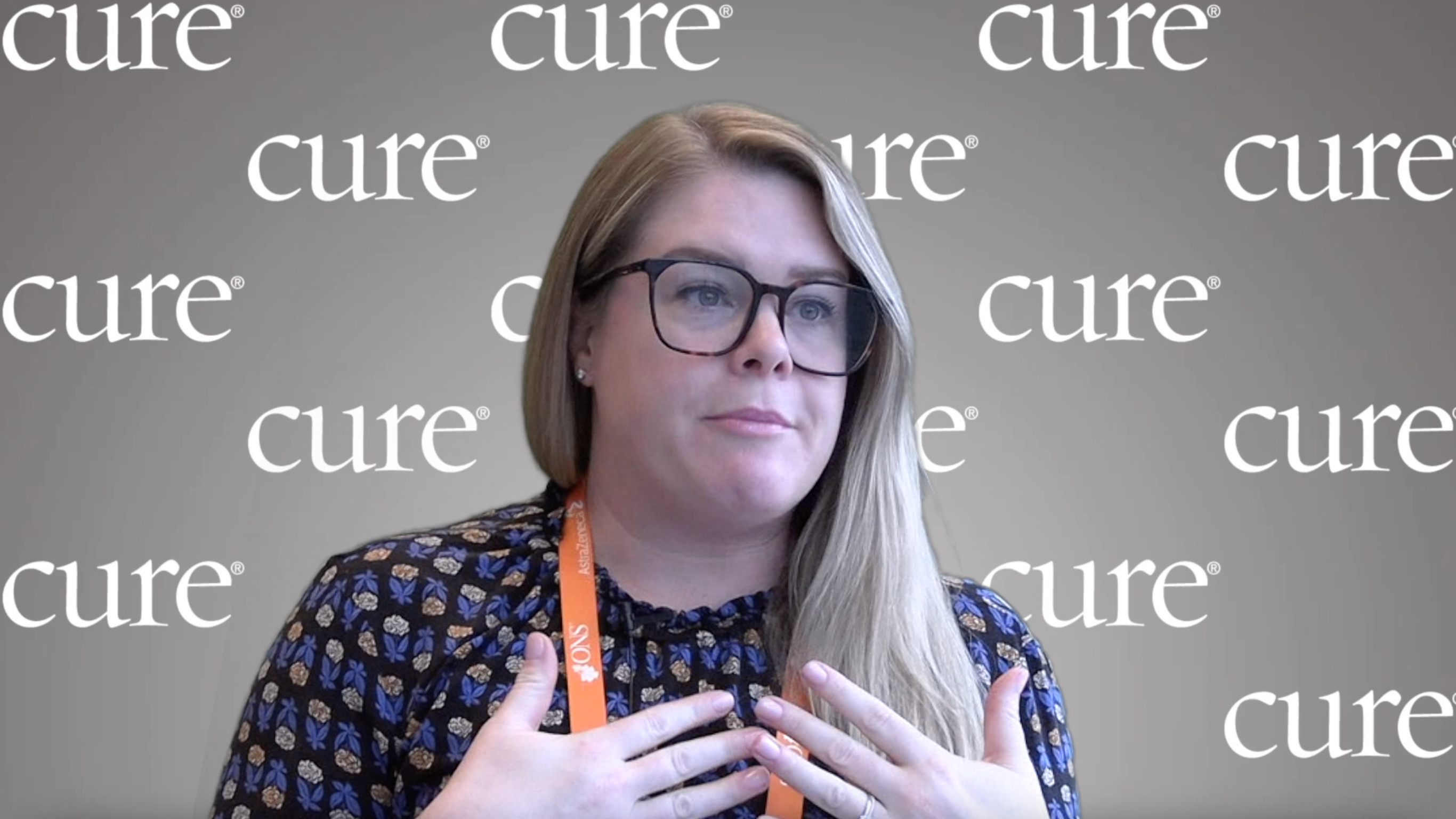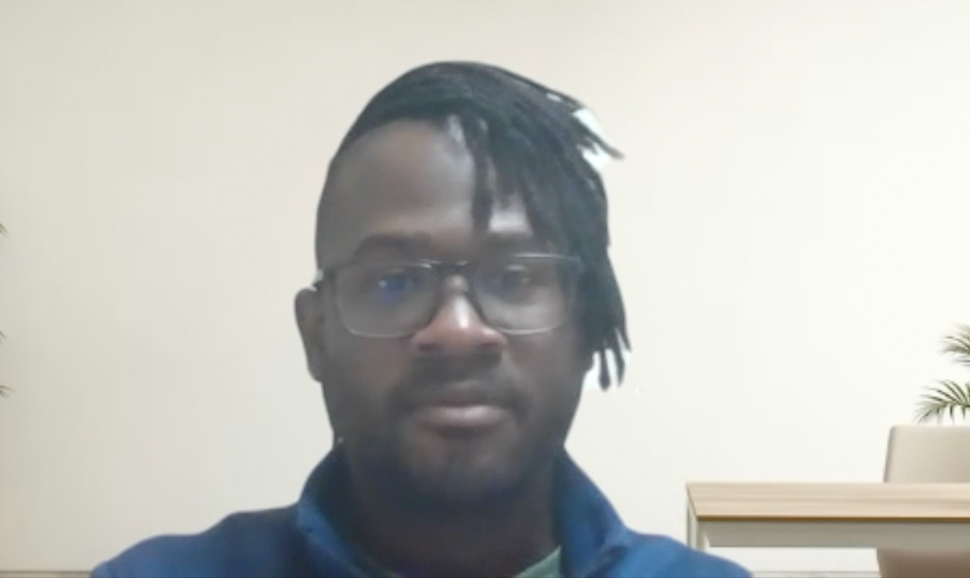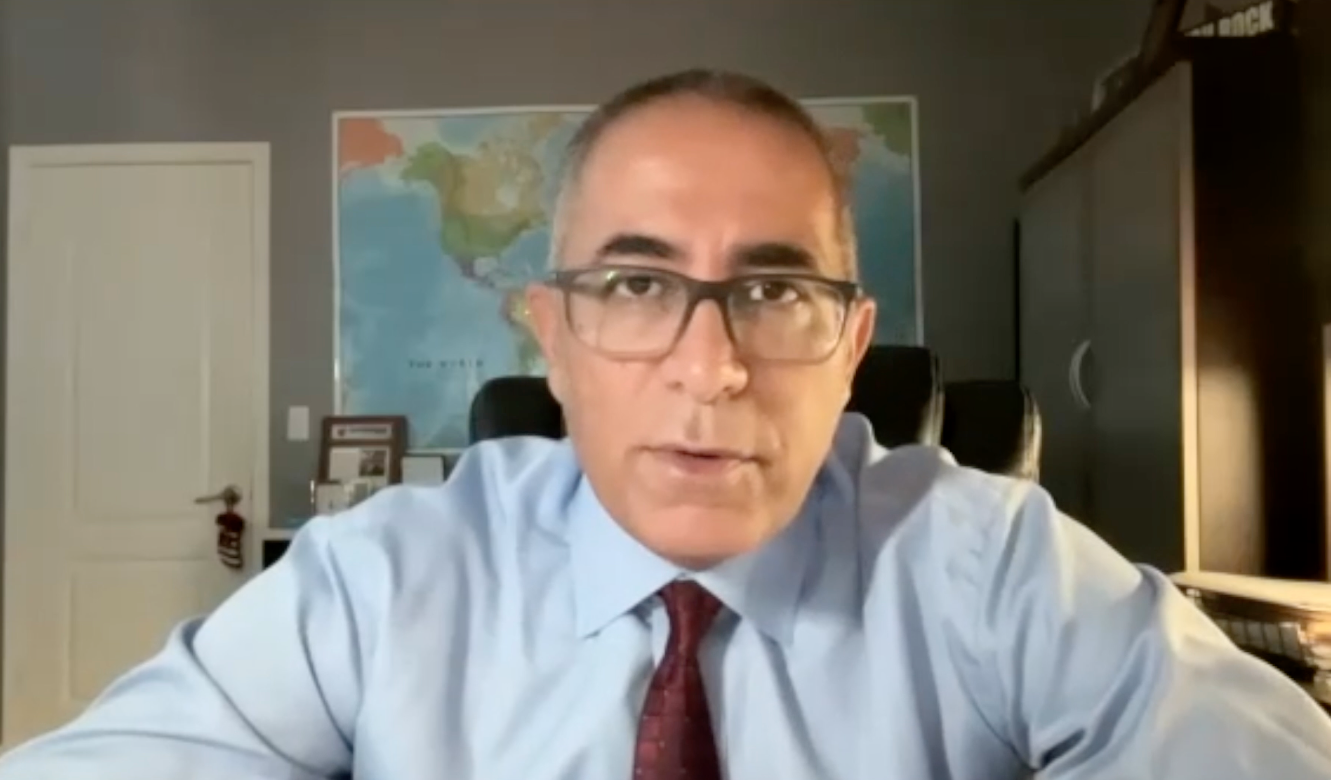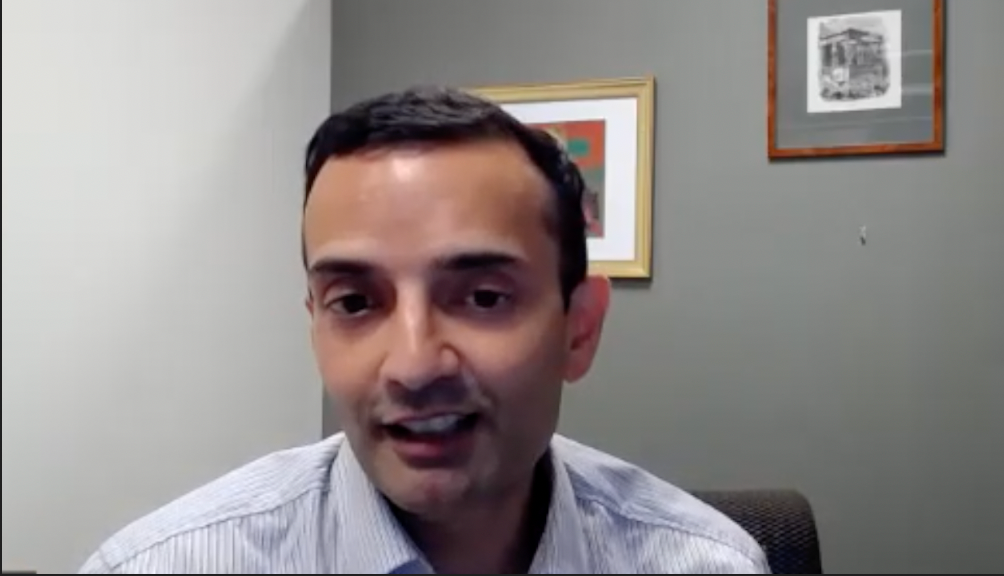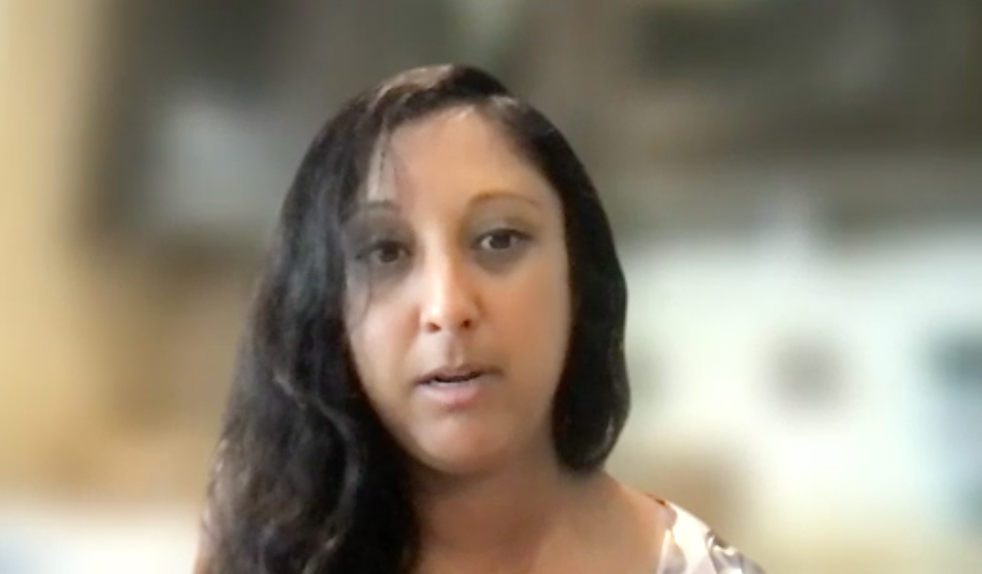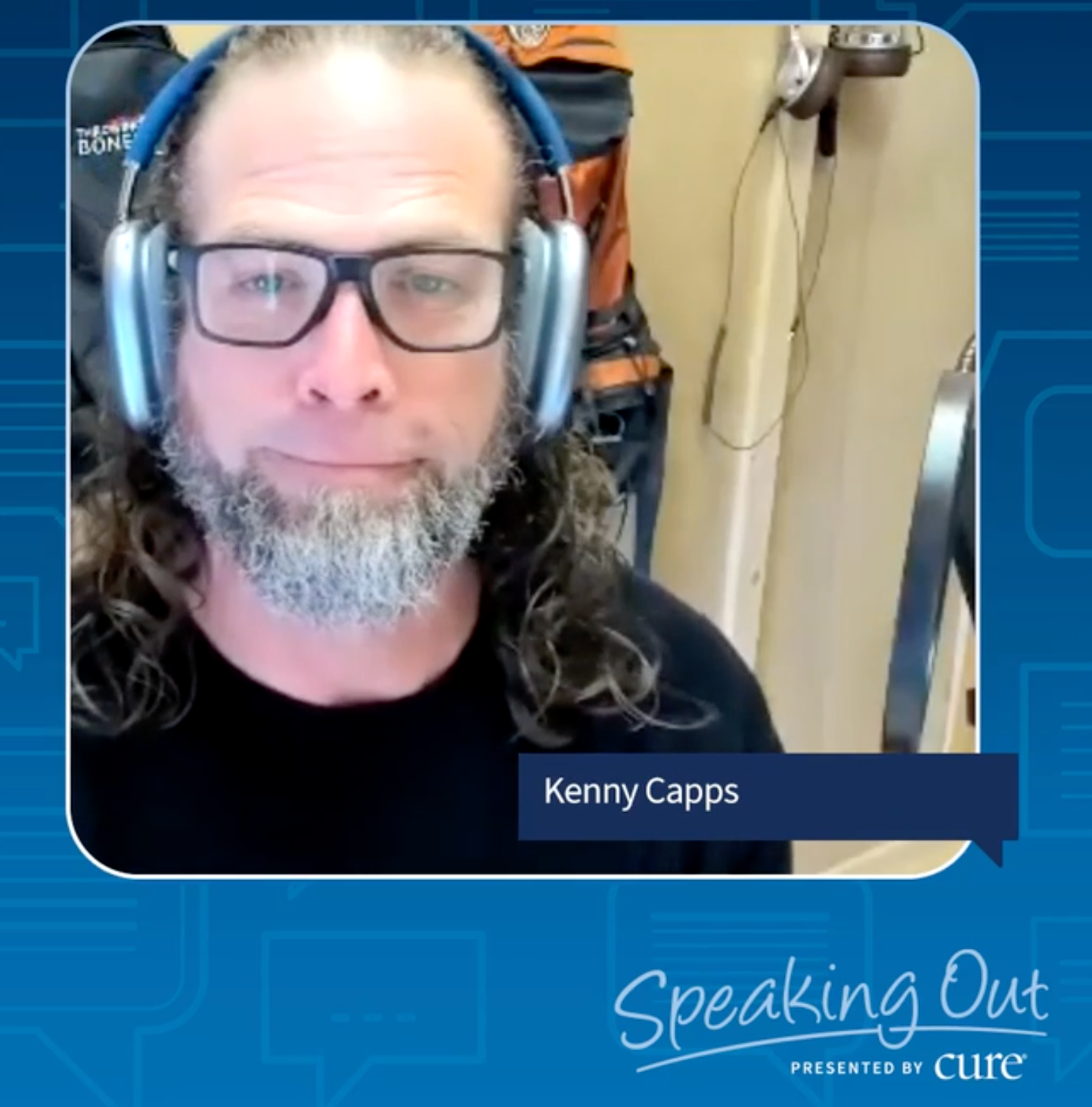Video
Resources from the MMRF
Author(s):
Transcript:
Kristie L. Kahl: What is the rate of myeloma diagnoses in the US each year?
Mary Derome: Myeloma is the second most common blood cancer behind non-Hodgkin lymphoma in the US, but with that said, it really is only 1.8% of the cancers that are diagnosed every year. So, it can be considered rare compared to other cancers such as breast and lung cancer.
Every year, just over 30 000 people in the United States are diagnosed with myeloma and there's about a little under 13,000 people who pass away from the disease every year. Currently about 100,000 people are living with myeloma in the US.
Kristie L. Kahl: Why is it so key to make sure that patients are seeing the right team or the right health care provider that's a specialist for multiple myeloma?
Mary Derome: This is really super important and one of the main reasons for that importance is because the relative rarity of multiple myeloma. Some oncologists may only see one or two myeloma patients every year because it's not that prevalent of a disease. These oncologists, because they see so few myeloma patients, might not be aware of the most modern and recent treatments and testing protocols and may not be aware of the best clinical trials that are available to their patients. Myeloma is a very complicated and heterogeneous disease and every patient's disease is different so it's really important for the right care team to be very aware of all of the most modern treatments and testing. Some patients do not have the resources available to them to travel to major academic medical centers and to see a myeloma specialist as often as is necessary for them but it's really important for every myeloma patient to get at least a second opinion from a myeloma specialist who sees a lot of myeloma patients and is really up on the latest and greatest in myeloma. Then, if patients continue to be treated locally, it's great if their oncologist can certainly be in touch with this myeloma specialist and really stay abreast of this patient's treatment. Then maybe they can see a specialist once a year just to stay on track with their disease.
Kristie L. Kahl: Can you discuss the MMRF’s Right Track Program?
Mary Derome: The Right Track is something that our founder and chief mission officer Kathy Giusti had been working on up at Harvard Business School, with five other non-profit cancer organizations. They came up with four steps that every cancer patient can take to make sure that they're moving toward their best possible outcome for their cancer.
The steps are seeing the right team, having the right testing done, being placed on the right treatment and then sharing data at every step.
We were saying previously about the importance of the right care team. It's really important for cancer patients to be seen by a specialist, either at an academic medical center or at an National Cancer Institute-designated cancer center, where the doctor sees a lot of patients who have their same type of cancer. They can be assured that their doctor knows a lot about the disease.
Then once they're with the right care team it's really important to have the right testing done. That includes genomic testing to enable your doctors to learn more about the subtype of your disease, which can be especially important for myeloma patients and that can help to potentially inform treatment options for patients.
Being on the right is what patients will move to after having the right testing done. The right treatment can be based on the subtype, the level of risk associated with their specific disease and previous outcomes that they may have had on other therapies.
The other important part is sharing their data at every step. We always encourage patients to share their data because that will really accelerate new therapies for all patients.
Kristie L. Kahl: How can patients learn more so they can be their own best advocate?
Mary Derome: Certainly, in the case of myeloma patients, it's really important to learn as much as you can about myeloma and what treatments are available out there. The MMRF has a lot of education programs for patients. We have live education programs; patient webinars; materials such as our patient kits; a lot of resources on our website. Those are all great resources for patients to learn about their disease so they can advocate for their own care.
We always encourage patients to have substantive discussions with their doctor whenever possible and ask as many questions as it takes for you to get the answers that allow you to understand exactly what's happening and why you're being treated with a certain therapeutic. We also encourage patients to reach out to resources such as our patient navigation center at the MMRF and ask our experienced myeloma nurses any questions they might have as well. That can really help them advocate for themselves and for their disease.
Kristie L. Kahl: Why is it important for patients to consider joining a clinical trial?
Mary Derome: We always talk about clinical trials and how important they are to move new therapies forward for patients to approval. There's no new therapies approved and no new treatments unless patients volunteer for clinical trials.
Patients seem to be a little bit afraid of what's going to happen and there can be some factors that may prevent them from being on a trial, such as being close enough to a center or not being able to see the doctor as many times as is necessary for the protocol. But in general, being on a trial means that you're being watched by your care team even more closely than normal. So you're getting even better care than normal and you might receive an active therapy that's not available to other patients and it might be really great. We always encourage patients to consider a clinical trial if it's appropriate for them at their stage in their disease journey. They can talk about it with their doctor and they can make that decision together.
Kristie L. Kahl: The MMRD also recently launched its Cure Cloud. Can you discuss this a little bit further?
Mary Derome: The Cure Cloud is a huge effort at the MMRF and we have been working on this non-stop for several years now. It's great because it finally launched on July 14. We’re really excited. We’ve always been a huge proponent of collecting as much patient data as possible because we know that having that data and having it available for researchers means better treatments and potentially accelerating a cure for this disease.
Leading up to the Cure Cloud, our COMPASS study was a great example of this. We've been monitoring newly diagnosed patients in this study for eight years and this study has been pivotal in the advancement of knowledge about myeloma and development new therapies.
We always encourage patients to donate their data because we know how important that is. I often hear from patients that they want to donate their data but they don't know how to donate their data or where to donate their data but now the MMRF has created a way for patients to do this and every patient can donate their data.
The Cure Cloud is a direct-to-patient effort we launched where patients can donate their own data to become part of the Cure Cloud study. This is an effort to create the largest database of clinical and genomic data for myeloma patients to accelerate new treatments and hopefully lead to a cure. All data that is collected will help all myeloma patients.
There’s a lot of firsts in the Cure Cloud. This is the first direct-to-patient effort in the myeloma community. We have the first at-home genomic testing for myeloma patients and the first CLIA grade liquid biopsy or blood test that can sequence patients by looking at myeloma DNA that's circulating in the blood without doing a painful bone marrow biopsy. This is free testing. It doesn't cost anything for the patient and it doesn't cost anything for the clinician.
In order to be eligible for the study, patients need to have active disease and that's because we need patients to have enough myeloma DNA circulating in their blood so that it can be detected in the test. So, patients need to have active disease. And certain smoldering myeloma patients will be able to join the Cure Cloud as well if they've already enrolled in the Dana-Farber PROMISE study or the P-CROWD study and receive a code from that study. Their enrollment in Cure Cloud will hopefully begin later this summer…
For Cure Cloud, active myeloma is defined as having an M spike of 0.3 grams per deciliter or greater and also a kappa lambda light chain ratio of 8 or more. Now, if patients don't have this information, they should talk to their care teams or they can call our patient navigation center at the MMRF. If patients are in remission or if they're on maintenance therapy, this is great news for these patients, but because they have a very low disease burden when in remission or when on maintenance therapy, the testing would not work on them because there's just not enough DNA circulating in their blood. But we still want those patients to sign up for the Cure Cloud. We're going to track everyone who signs up. We're going to be in touch with them and
keep track of how they're doing and if their myeloma begins to relapse we certainly will have them donate their blood sample at that time and donate.
If patients are deemed eligible and they sign up for the study online, then they need to have their doctor sign a form which gives consent for the blood draw. Then a mobile phlebotomist (a person who draws blood) will come to their home and safely do the blood draw. The blood will be shipped to our lab for sequencing. At the same time our partners in the study will be collecting all of the patient’s medical records from all the doctors and centers that the patient has been to. These two pieces of data are joined together but they're de-identified so they cannot be linked back to the patient. All of this data is stored in our very secure cure cloud database and the data is also collected on the patient's own secure dashboard which is within our Cure Cloud database. They can also access it. Patients and doctors will both receive results of the genomic testing so when the patient's blood is sequenced the result will come back to the patient. The result will also go back to the doctor. They will have a listing of clinical trials that might be appropriate for them based on their genomics and that will also allow the patient and the doctor to have more useful data-driven and substantive discussions about future therapeutic options for them. Data will also be available to certain researchers.
This is going to certainly accelerate new therapies for all myeloma patients and hopefully a cure for this disease. In the future, as Cure Cloud begins to gather more and more data, our goal is to
put together the data of at least 5,000 patients in the cloud database. As we gather more data, the clinical data, the genomic data and the immune data on patients, patients and doctors everywhere will have access to visualization portals where they're going to be able to see treatments and outcomes for patients who look like them and that's going to help patients and their care teams make more informed and data-driven decisions on what therapeutic options might be best for them.
Kristie L. Kahl: Are there any other additional resources that the MMRF has available?
Mary Derome: We have three great things for patients. First and foremost, we have a patient navigation center that is second to none. We have three very experienced myeloma nurses working in our patient navigation center. Our nurses can be reached at 888-841-6673 or they can be reached by email at patientnavigator@themmrf.org. They’re there every day during the week from 9 a.m. to 7 p.m., to answer any questions. They’re a fantastic resource for for all patients.
Secondly, we have a brand new program that we just started called Myeloma Mentors. We have about a dozen specially trained myeloma patients who can act as mentors to other patients. We have a great page for them on our website where you can see the mentors, you can see where they are in their disease. We have some smoldering mentors, some newly diagnosed mentors, mentors with relapsed/refractory disease who are just interested in speaking to someone who may be going down the same road that they're going down with their journey or maybe they've been through a procedure that this patient is thinking about they want to really find out you know how it was and what their experiences were like. They can contact the patient navigation center and be matched to a mentor who they can then talk to on the phone and they can share their experiences and share their journey, which is a great resource.
The third, we have our website, www.themmrf.org. It just underwent a complete modernization overhaul facelift. It’s reallygreat now and I encourage patients to go to the website. All of our educational resources are there. They can listen to webinars, patient summits, order our patient kits or read them or download them.
Kristie L. Kahl: What is your biggest piece of advice for patients with multiple myeloma?
Mary Derome: Three thing. First, I recommend that patients learn as much as they can about their disease so that they can be active partners in the decision-making process with their doctors. This is so important. And then they become an educated medical care consumer so that they really understand what the doctor is treating them with and why. And if they have questions, they know how to ask them and get the answers that they need so they feel comfortable with the decisions that are being made on their behalf.
Second, I recommend all patients take full advantage of organizations – like the MMRF – trusted third parties, trusted sources of myeloma information. We can help you find the resources that you need. Certainly call the patient navigation center and whatever you need we can certainly help you with.
Finally, if you're diagnosed with myeloma or if you've been in treatment and you've relapsed, my best advice is don't lose hope. Developments happen really quickly in myeloma and there's been a lot of amazing advances in the myeloma field just over the past few years. There's a very active community of physicians and researchers in myeloma. Many new treatments are on the horizon. There’s great efforts like our Cure Cloud that are in place. Data being collected that can help identify precisely the right treatment for each patient and hopefully help cure this disease in the future. The future is really bright for myeloma.
Transcription edited for clarity.



